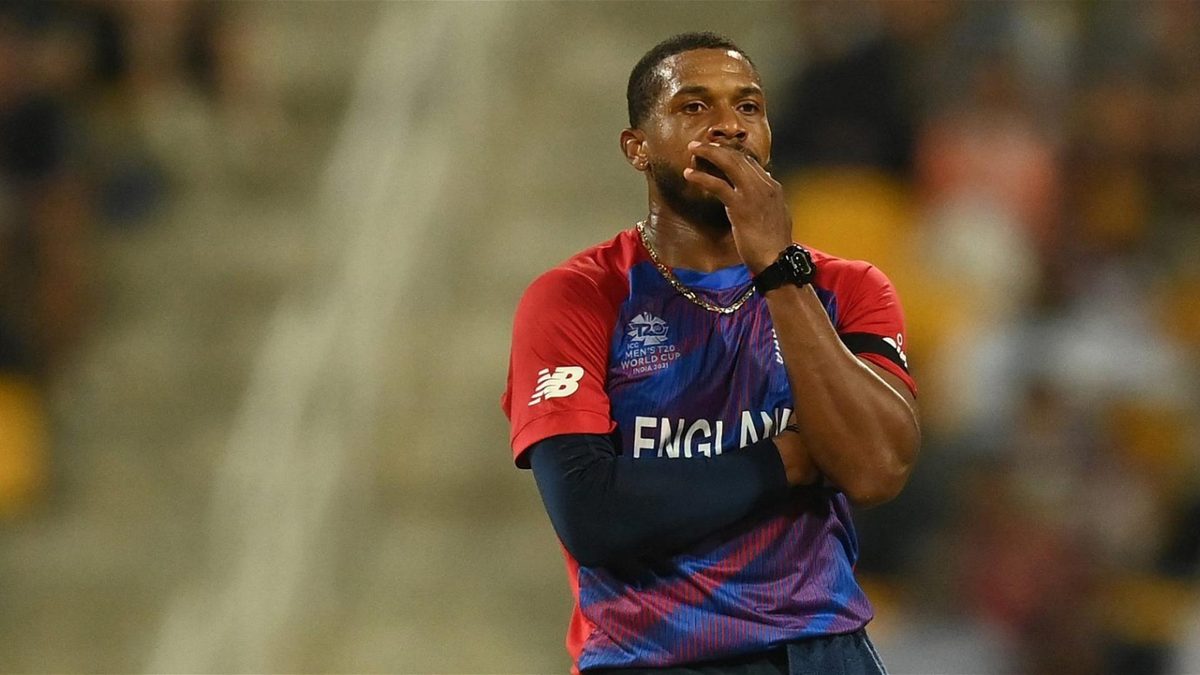
Ben Gardner reflects on Chris Jordan’s death over that cost England.
Sign up to bet365 to be entered into a draw for the chance to win a Wisden Hoodie, terms and conditions apply, more information here. 18+ begambleaware.org
This was always the danger.
There is much to admire about Chris Jordan as a cricketer. He is clearly a respected presence in England’s dressing room, one of the first to whom Eoin Morgan turns in a crisis to figure out what should be done next. He adds plenty of value in his other skills as a resourceful batter, and perhaps the best fielder in the world, with the latter skill on display against New Zealand with a six almost hauled in in outrageous fashion. But there’s always been the feeling gnawing away that his primary skill, his ‘superstrength’, in modern parlance, is not super enough; that Jordan, the death bowler, has been something of an accident waiting to happen. Against New Zealand it happened in the most damaging way possible.
Cast your mind back three overs and what feels like decades ago, and Liam Livingstone had won England the game with the ball. Bowling his strange mixture of off- and leg-breaks he finished with 2-22, including a last over which went for just three runs and contained the wicket of Glenn Phillips. Jimmy Neesham was in, New Zealand’s last proper batter, and 57 runs were needed off the last four overs. Chasing teams have dominated at the T20 World Cup, but given scoring has generally proved difficult, this should have been an impossible ask.
One ball later, and it was clear the Black Caps still believed. Jordan went for the yorker, missed, and was swung away for six. What happened next came quickly, perhaps too quickly. There were wides, leg byes, another four carted through long-on, a six Jonny Bairstow couldn’t quite haul back in, and a miscommunication between Bairstow and Livingstone one ball later. What there weren’t were any dot balls, and only one or, if generous, two yorkers. All of a sudden New Zealand needed 34 off three and had the momentum. Jordan’s nerves transferred to England. Adil Rashid went for a pair of sixes, and though his dismissal of Neesham gave England brief hope, Daryl Mitchell channelled his inner Grant Elliott, playing the innings of his life and finishing it with an over to spare. Jordan was not asked to bowl the 19th.
It’s not hindsight to question Jordan’s overall credentials, for he has long felt a bowler slowly falling out of step with modern death bowling methods. Tymal Mills arguably defines the current trend, mixing up speeds and lines and holding back the length, the yorker used rarely, if at all. Jordan’s method relies on the latter, with the toe-crusher fast becoming cricket’s most divisive delivery. Nail it, and there’s nothing more likely to take a wicket and less likely to go the distance. The problem is, the margins are so bare and the risks of erring so great. Batters have learned to wait for the error and take full toll of the full toss or half volley.
There have been other examples of the folly of the full one this tournament. When Afghanistan faced Pakistan, a similarly tough ask, with Babar Azam’s side needing 24 off 12, was turned on its head by Asif Ali. Karim Janat went for the yorker five times and nailed it twice, a success rate which, if sustained, would make him the most accurate yorker bowler in history, according to CricViz’s Freddie Wilde. But, as Wilde points out, the other three went for six, and the game was done.
https://twitter.com/fwildecricket/status/1454142413769953281
Jordan’s preferred strategy has served England well before. In the 2016 World T20, he maintained an economy rate of eight an over at the death, taking four wickets in that phase. In the final, he conceded 15 runs in his last two overs, with his last ball – a yorker – squeezing under Marlon Samuels’ bat to keep the man on 85 not out off strike and leave Ben Stokes with 19 to defend off the final over. He accepted his cap with one hand on the World Cup. Perhaps it’s harsh to judge Jordan on one game.
But his overall record is not that of an elite death bowler, despite being employed there more often than anyone else. He has bowled 377 T20I deliveries at the death in the last five years, the most by any bowler. But he has conceded over 10 an over in that time. In all T20s, he has leaked runs at just under 10 an over in the same period. And the nature of tournament play is that one game is often what defines a team, and therefore the players within it.
Had England had all their bowlers fit, Jordan might not have played. Jofra Archer is perhaps the first name on any T20 teamsheet in the world, while Mills has made his play to be Morgan’s first-choice death option. But also, he might have. He has played 54 of England’s 56 T20Is since the last World Cup, with Mills largely sidelined. Morgan has long trusted Jordan. The question is whether he should have, and should still.
There wasn’t anyone else fit in England’s squad definitively better at the death, so there was little alternative for this game. How England managed that phase was one of two key dilemmas coming into the game, and it was always likely to define their success or otherwise. But given it’s a man who has been their most trusted who failed them first, the latter question feels more pressing. England have put plenty of trust in Jordan, and there are plenty of reasons why. But if they stick with him for next year’s T20 World Cup, it will be another show of faith for a bowler who, increasingly, isn’t repaying it.








